Additional notes (click to expand)
Horticulture
Rounded, bushy, deciduous shrub with rigid green shoots armed with very sharp spines. Alternate, 3-palmate leaves, 2.5-6cm long, comprise of 3 obovate, dark green leaflets, to 5cm long, turning yellow in autumn. Solitary, cup-shaped then saucers-shaped, fragrant white flowers, 5cm across, are borne in late spring and early summer, often again in autumn, followed by orange-like, inedible, green then orange fruit, 4cm across. Grows to 5m high and wide.
Brickell, C. (2003). A-Z Encyclopedia of Garden Plants. Dorling Kindersley. p.839
Grow in fertile, well-drained soil in full sun. Shelter from cold, dry winds. Prune after flowering or fruiting if required.
Sow seed in containers in a cold frame in autumn. Take semi-ripe cuttings with bottom heat in summer.
Pest and disease trouble tree.
Brickell, C. (2003). A-Z Encyclopedia of Garden Plants. Dorling Kindersley. p.839
Medicinal
In Asia, the thorns are used in the treatment of toothache. The stem bark is used in the treatment of colds. The fruits contain a number of medically active constituents including flavonoids, coumarins, monoterpenes and alkaloids. The fruit, with the endocarp and seeds removed, is carminative, deobstruent and expectorant. It is used in the treatment of dyspepsia, constipation and abdominal distension, stuffy sensation in the chest, prolapse of the uterus, rectum and stomach. It is milder in effect than the immature fruit and is better used for removing stagnancy of food and vital energy in the spleen and stomach. The unripe fruit is antiemetic, antispasmodic, deobstruent, digestive, diuretic, laxative, stimulant, stomachic and vasoconstrictor. It is used in the treatment of dyspepsia, constipation and abdominal distension, stuffy sensation in the chest, prolapse of the uterus, rectum and stomach, shock.
http://www.pfaf.org/user/Plant.aspx?LatinName=Poncirus+trifoliata
Nomenclature
trifoliata- with three leaves
Stearn, W.T. (1996). Dictionary of Plant Names for Gardeners. Cassell. p.298
Poncire- French for a kind of citron.
Stearn, W.T. (1996). Dictionary of Plant Names for Gardeners. Cassell. p.246
A synonym of Citrus trifoliata. See Citrus trifoliata record.
The Royal Horticultural Society Horticultural Database, available at www.rhs.org.uk www.rhs.org.uk
Other use
Used as a rootstock for Citrus species (i.e. oranges and lemons). It confers an extra 3°c resistance to the cold. The plant is very thorny and makes an excellent impenetrable barrier or hedge, though this barrier is not very dense.
http://www.pfaf.org/user/Plant.aspx?LatinName=Poncirus+trifoliata
Geographical distribution
- Asia-Temperate, China
- Asia-Temperate, Eastern Asia, Korea
Poncirus trifoliata (L.) Raf.
Family: RUTACEAEGenus: Poncirus
Species: trifoliata (L.) Raf.
Common names: Trifoliate Orange; Japanese Bitter Orange
Distribution summary: E. Asia
Habit: Shrub
Hardiness: H5 - Hardy; cold winter
Habitat: Deciduous woods, scrub, hedgerows, calcareous woods
Garden status: Not currently grown
Flowering months: April
Reason for growing: Medicinal
.JPG)
.JPG)
.JPG)
.JPG)
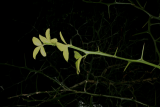
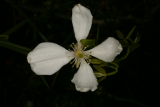
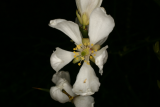
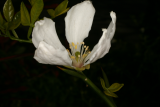
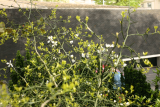
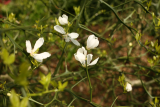
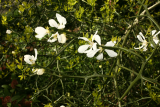
.JPG)
 (3).jpg)
.JPG)
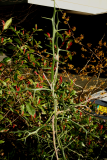
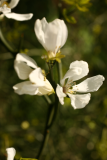
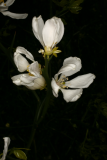
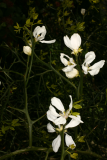
.JPG)